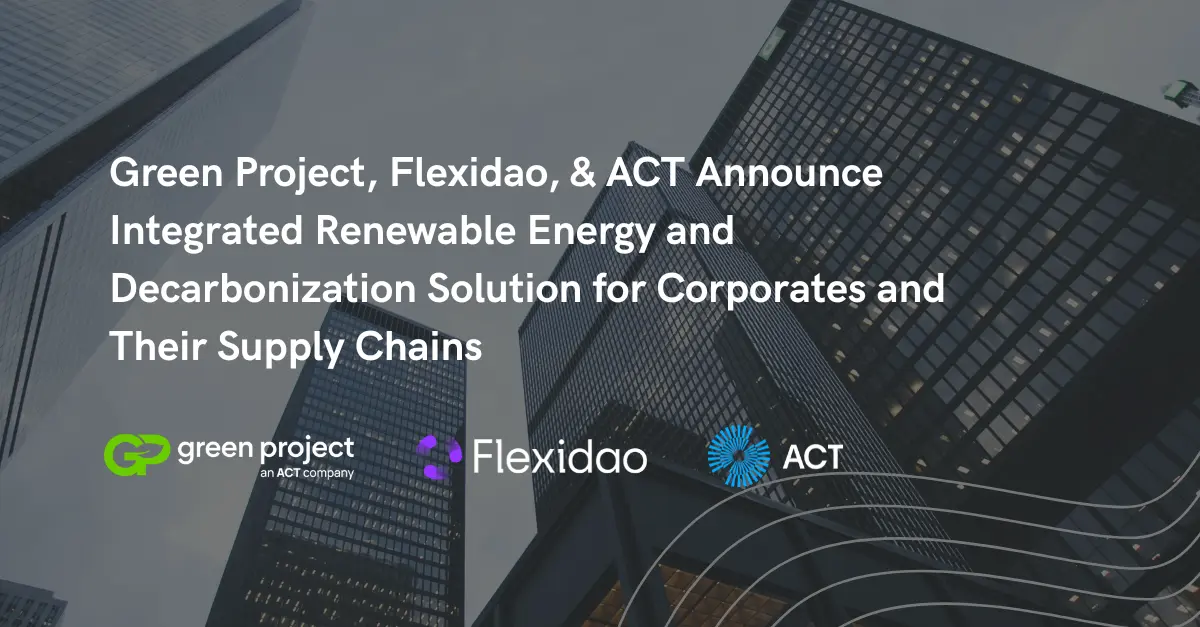5 Key Updates to the Renewable Energy Directive II (RED II)
5 Key Updates to the Renewable Energy Directive II (RED II)
Stay ahead with Flexidao's insights on the latest updates to REDII. Enhance your renewable energy strategy with our expert analysis.
5 Key Updates to the Renewable Energy Directive II (REDII)
In July 2021, the European Commission (EC) unveiled its proposal for the Fit for 55 legislative package. This package aims to set Europe on course to become the first carbon neutral continent by 2050. Fit for 55 is an extensive set of new strategies and updates to existing energy and climate legislation.
Central to the legislative updates is the revision of the Renewable Energy Directive II (RED II). The RED was originally set up in 2001 to promote renewable energy use in electricity generation. It was amended in 2018 to reflect higher ambition resulting from the Paris Agreement. The current proposals will effectively be the third revision of the Renewable Energy Directive. The team at FlexiDAO has reviewed the updates to RED II and outlined the key changes in this article.
Key updates on REDII
We have highlighted five of the most important updates:
- More ambitious renewable energy targets: Based on the current status of the RED II, the EU-level target for renewable energy in 2030 is at least 32 percent in the overall energy mix. The update to the legislation will target a rise to at least 40 percent by 2030. Sub-targets for advanced biofuels will also be increased to 2.2 percent in 2030. And a new 2.6 percent sub-target for renewable fuels of non-biological origins (RFNBOs), including hydrogen, will be introduced. These new targets represent a significant step-up in climate ambition in the EU. The changes will bring challenges but offer many opportunities to the energy sector.
- Wider scope of renewable fuels certification and traceability: Green Hydrogen and its derivatives have been outlined as a key aspect of the EUs net zero strategy. To facilitate the growth of this market, new rules around certification and traceability of these fuels will be introduced. Renewable fuels from non-biological origin (RFNBO) including Green Hydrogen will be tracked and certified under new mechanisms. This is likely to be as part of a newly setup ‘Union Database’ or through certification schemes such as Certifhy.
- Removing Guarantee of Origin (GO) subsidy rules: In the current GO scheme, some member states prohibit the issuance of GOs to generators that receive state subsidies. This is seen as a barrier to the uptake of Power Purchase Agreements (PPAs) as corporates won’t receive renewable certificates as part of the purchase. Under the revised legislation, all member states will be obliged to issue GOs to both supported and unsupported renewable generators. These changes should drive further growth in the accelerating market for PPAs.
- New labelling methodology for industrial products produced using renewable energy: The commission has proposed to introduce greater focus on the labelling of industrial products. Companies will need to indicate the percentage of renewable energy used in the raw material acquisition and pre-processing of industrial products. This has been identified as an opportunity to increase consumer uptake of renewable and low-carbon products. This will also facilitate the growth in demand of clean materials across the B2B sector. For example, construction firms can reduce Scope 3 emissions by specifically purchasing steel and cement produced using renewable power and heat.
- Changes to the treatment of Biomass and Biodiversity: The use of biomass for renewable power generation has always been a contentious issue. Some would argue that using biomass for power generation is not truly carbon neutral. And that it has greater negative impacts on biodiversity than other power sources. Of the changes proposed, the prohibition of the use of biomass from primary and highly biodiverse forests is the most significant.
Does it go far enough?
Industry observers such as the World Wildlife Fund (WWF) and Greenpeace have been calling for these changes to be made to the sector.
In a recent article, the WWF outlined its position on the proposed EU climate action. They highlighted top-level figures of a 65 percent emission reduction target and a 50 percent renewable energy target for 2030. The current proposals don't go this far but still remain highly ambitious targets for the continent.
Similarly, Greenpeace outlined their demands in a recent white paper. The paper focuses on the current issues around the use of biomass for renewable energy and biodiversity impacts. As previously discussed, the current proposals deal with some of these issues but not all.
Expanding the scope of renewable certification
Of the updates to the directive, a key takeaway is that we need to put in place greater certification and transparency for renewable energy. Both individual and corporate consumers need high quality certification to ensure that their climate action is credible.
The certification of renewable electricity is more developed than other markets but there is a long way to go to achieve its full potential. Further work needs to be done on energy certification and organisations like EnergyTag are advocating for a more granular certification of renewable energy without disrupting the current schemes.
In terms of green hydrogen, the certification market is still in its infancy. The proposed update to RED II is a positive first step to develop the market. However, a coordinated effort across industry and government will be required to develop the market with high quality trust and transparency.
FlexiDAO, 24/7 carbon-free energy traceability
FlexiDAO provides the software tools to take the certification of renewable power and green hydrogen to the next level. We are already working on projects in both sectors.
In the renewable power sector, we already work with many businesses helping them to easily track and visualise their renewable energy use. Our software can also help companies to comply with new rules around industrial product labelling.
In the hydrogen sector, we have partnered with ACCIONA to develop GreenH2chain®. This is the world's first platform based on blockchain technology that guarantees the renewable origin of green hydrogen. This is a flagship project that will set the standard for the certification of green hydrogen and its derivatives going forward.
Don't hesitate to get in contact with our team if you would like to discuss changes to the RED II and how it could affect your business. To keep up-to-date with changes to renewable energy legislation and other energy topics, sign up to receive our monthly newsletter below.


.webp)





